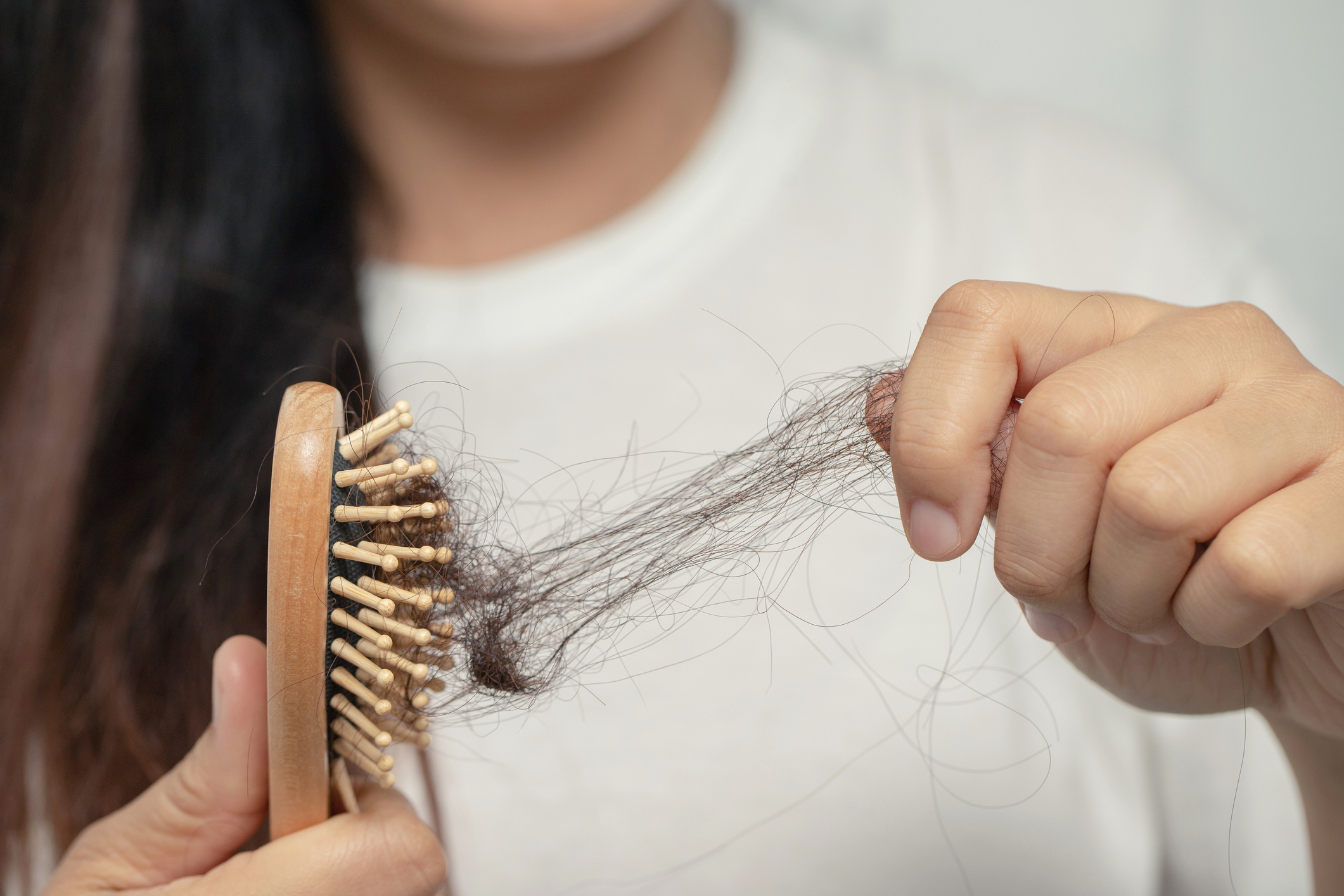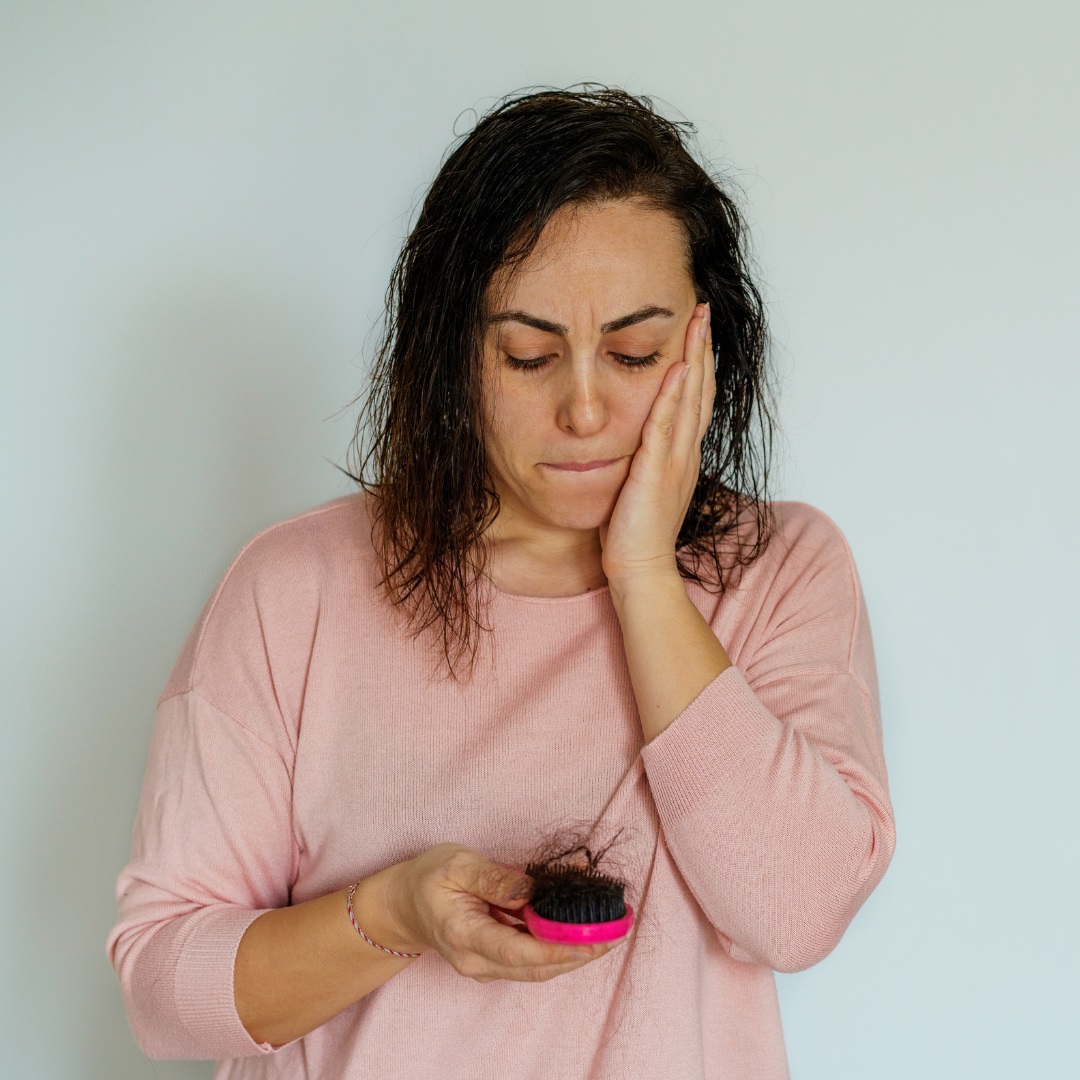Table Of Content
- DATA AVAILABILITY STATEMENT
- Free Healthbeat Signup
- What blood tests should I get at my annual physical, and what do they mean?
- What are the best treatment options for COVID-19?
- What color is your tongue? What's healthy, what's not?
- What’s the mechanism of TE?
- stress
- Hair tends to return to normal on its own

Some symptoms remain and persist throughout the acute and chronic stages, whereas other symptoms newly appear after the acute phase [3-4]. Hair loss is not common in the acute phase of COVID-19 but is a well-known sequela of COVID-19 observed in approximately 20% of these patients [2]. However, only a few case reports have described its clinical course. Herein, we report the case of a patient with post-COVID-19 alopecia that improved and recovered almost to the pre-infection level. This first scoping review shows that hair loss does occur in a proportion of COVID-19 cases, and is mostly reversible. No clear associations were made with COVID-19 severity, but female patients seemed more at risk for alopecia with this condition.
DATA AVAILABILITY STATEMENT
Of these patients, 79 were male (39.9%), and 119 were female (60.1%). Telogen effluvium (TE) is one of the consequences of the COVID-19 pandemic. COVID-19 leads to more medications and stress situations, which trigger TE. Although our patient received medication for alopecia areata on his request, TE is reversible and expected to improve without any treatment after the psychophysical damage disappears [6].
Free Healthbeat Signup
COVID-19 hair loss blamed on telogen effluvium: treatment, regrowth - TODAY
COVID-19 hair loss blamed on telogen effluvium: treatment, regrowth.
Posted: Mon, 03 Aug 2020 07:00:00 GMT [source]
Based on our knowledge, previous studies were case reports or case series [10, 11]. CCCA and LPP fall under the umbrella of lymphocytic scarring alopecia. The telltale signs of these conditions are chronic inflammation of the scalp and the scarring of hair follicles, which can result in irreversible hair loss, Agbai notes. The virus is thought to reach the skin through blood vessels facilitated by the presence of ACE2 receptors in the endothelium. This could be another way the SARS-COV2 could impact the hair follicles.

What blood tests should I get at my annual physical, and what do they mean?
People experiencing female pattern baldness may also notice a general thinning of hair on the top of your head, but hair loss typically won’t occur on the front of your scalp, per Harvard Health. Hair loss is not common in the acute phase of COVID-19, but a sequela of COVID-19 is observed in approximately 20% of the patients [2]. Most cases are TE, secondary to the physical or psychological distress of COVID-19 [6]. Androgenetic alopecia is considered a risk factor for severe COVID-19 (named the “Gabrin sign”) [8]; however, this is not a sequela. The stress of COVID treatment, or pandemic life, can also be a factor in hair loss. Wolf said it’s not surprising that people experience hair loss after having a high fever or being placed on a ventilator during a hospital stay since all are mentally and physically stressful situations.
Dr. John Wolf, chair and professor of dermatology at Baylor College of Medicine, discussed how this can happen and how to manage it. Another unique feature of the effluvium seen post-COVID-19 is the significant overlay of psychoemotional stress. This is unlike any other infection, which leads to telogen effluvium because the ambient stress caused the pandemic itself and contributed to a large extent by the restriction measures taken to prevent the spread of the disease. Telogen effluvium would be one of the important aspects of long COVID, which will impact the quality of life of the affected person. However, the definite mechanisms of hair shedding following COVID-19 infection are not well known and further studies to elucidate the exact mechanisms are required [7]. Although hair loss is considered a benign condition, it can be devastating to a patient’s self-esteem, self-image, and overall quality of life.
Some Women Suffering From Long COVID Say Extreme Hair Loss Is Among Symptoms - CBS News
Some Women Suffering From Long COVID Say Extreme Hair Loss Is Among Symptoms.
Posted: Fri, 28 Jan 2022 08:00:00 GMT [source]
What color is your tongue? What's healthy, what's not?
These options should be explored with the support of a healthcare provider. The stress of living in the COVID-19 pandemic can be enough to cause hair shedding for a lot of people. Hair loss and hair shedding can be the result of a number of conditions, including a recent COVID-19 infection. Even after the shedding has stopped, patients may notice their hair is not as thick as it once was. Perng says that's because of how slowly the hair grows on average, which is about a centimeter a month. "If someone has shoulder length hair, it can take over two years for the new hairs to reach that length again and for a ponytail to feel full again," he says.
What’s the mechanism of TE?
The phenomenon is especially common among long COVID patients who continue experiencing symptoms such as fatigue, brain fog and shortness of breath weeks or months after recovering from the initial infection. But long COVID patients are often surprised by the hair loss symptom. This is likely because their bodies are undergoing a significant amount of stress and are still not quite back to normal. Perng reassures patients who experience chronic telogen effluvium that they will not lose all of their hair, because the proportion of telogen hairs never exceeds 50 percent.
Telogen effluvium usually doesn’t occur at the same time as the triggering event, though—it starts approximately three months after, Dr. Ziering says. A common symptom of severe acute respiratory syndrome coronavirus 2 (SARS-CoV-2) infections was the loss of taste and smell. First of all, the sample size was limited and the study is only retrospective. Based on our knowledge, this is the first cross-sectional study investigating TE triggered by COVID-19 in Iran. TE can occur as a result of hydroxychloroquine, azithromycin, or other drugs used in COVID-19 treatment. The mental and psychological effects of the pandemic are another critical source of stress; therefore, TE may be increased overall [17].
Hair tends to return to normal on its own
Of the participants, 196 (46.12%) noticed hair loss one to three months after having COVID-19, followed by 119 (28%) who noticed it one week or less after contracting COVID-19. A total of 140 (32.94%) participants suffered hair loss for more than six months after being infected with COVID-19, while in 111 (26.12%) participants, hair loss lasted one to three months. In response to questions about hair loss complaints pre-pandemic and a family history of alopecia, 426 (52.9%) and 539 (66.9%) participants reported not having previous hair loss or a family history of alopecia, respectively. The majority (86%) of the participants who experienced alopecia had not consulted a dermatologist for this problem (Table (Table33). It is characterized by non-scarring, diffuse hair loss from the scalp. It occurs as a reaction to various insults that can be physical, mental, or chemical, resulting in a premature follicular transition from the anagen (active growth phase) to the telogen (resting phase).
Doctors aren’t sure why only some people develop these unusual symptoms. Genetics might play a role, Dr. Mulligan said; vaccination status could also have something to do with it, as an unvaccinated person might have a more severe infection, which could generate a different course of symptoms. Scientists have also found that the coronavirus can enter the bloodstream in a minority of people, he said, which means that it’s possible that the virus could enter various organs across the body and cause symptoms beyond the respiratory system. Hair loss due to COVID-19 is likely due to a condition called telogen effluvium. This type of hair loss is hereditary, meaning that you can inherit it from your parents.
“Though losing hair can be scary, I always reassure patients that they won’t go bald from COVID-related shedding,” Dr. Kuhn says. “Typically, the best thing to do is simply wait it out.” In the meantime, practicing healthy hair habits is paramount. Here, dermatologists explain the connection between COVID-19 and hair loss—and what you can do if you’re experiencing this unique type of shedding. The list of possible COVID-19 side effects is as lengthy and diverse as the list of potential symptoms. Among those possible lingering issues is hair loss after COVID-19, a troubling side effect that emerged early on in the pandemic, leaving many people confused and concerned. Her academic background is in evolutionary biology and genetics, and she has extensive experience in scientific research, teaching, science writing, and herpetology.

Avoid vigorous towel drying and harsh brushing or combing, especially when the hair is wet and more prone to breakage.” If you do want to continue using some heat, a heat protectact and something like a leave-in treatment are both recommended. Alopecia areata is an autoimmune condition that is characterized by “round patches of hair loss on the scalp,” although it can occur elsewhere on the body, Agbai says. While the exact reason for this type of hair loss is unknown, it is generally understood that “the immune system mistakenly attacks hair follicles, leading to hair loss,” she adds.
Acute TE is a self-limiting disorder that usually lasts for about six months, after which it usually goes into remission [6]. In the telogen phase, hairs rest for 2 to 3 months before being shed from your scalp to allow for new hair growth. This is why hair loss due to TE happens so long after a triggering event, such as an illness or highly stressful period. The cytokines had higher levels in severe COVID-19, according to previous studies. The higher levels of cytokines may have a relationship with a higher risk of TE.


No comments:
Post a Comment